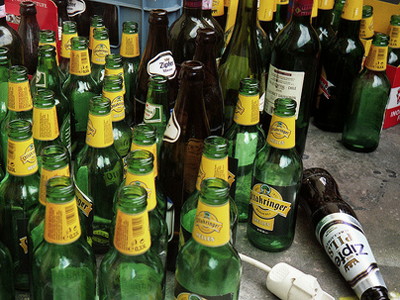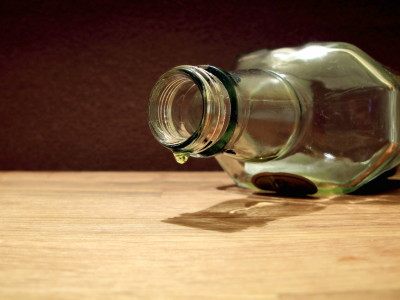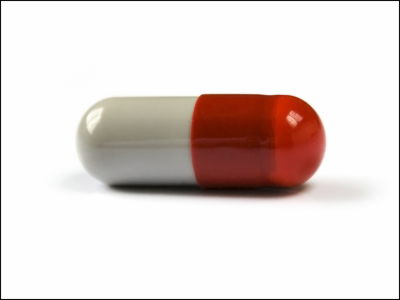Identify the genes involved in "desire to do a drunk drink" desire

BySpuz
"Binge Drinking(Binjidinkingu) "is a" drinking drink "or" mass drinking "that reaches a blood alcohol concentration of 0.8% (mass concentration) in 2 hours after the beginning of drinking, so that a so-called" call "takes a student's drink How to drink like a party. "I drink constantly every day" "When I stop drinking I have withdrawal symptoms"AlcoholismAlthough it is different from the young generation in particular, the custom of "binder linking" such as "to drink so much as to make a hangover with a group once a week without drinking every day" can be a serious health risk, It can also lead to traffic accidents and crime.
Research by the University of Maryland School of Medicine identifies two genes involved in this "binder linking" and is expected to lead to a new approach to drinking problems.
Details are as below.University of Maryland School of Medicine Study Identifies Genes Associated With Binge Drinking
Currently, in the United States, 30% of the drinking population has a "drinking too much" habit, and 75,000 people per year suffer from "excessive drinking" as a direct or indirect cause of death.
As an alcohol-dependent treatment, in the United StatesNaltrexoneYaAcamprosateIn addition to medicine to suppress 'craving', to suppress withdrawal symptomsDiazepamYaChlordiazepoxideAnxiolytic drugs such as antianxiety drugs are prescribed in many cases, but although anxiolytic drugs have the effect of suppressing anxiety and the like caused by alcohol abuse, they can not suppress "craving" for alcohol, and anxiolytics themselves There is also a problem that there is dependency. Gene therapy is expected to be a new approach instead of current medication therapy and psychotherapy, but first it is necessary to identify the target gene.
University of Maryland School of MedicineProfessor Harry June and colleagues reported that the brains of rats who had the custom of "binder linking"GABA receptorWhenTLR 4(Toll-like receptor 4), We confirmed a reduction in "selective and significant" binder-linking (losing interest in alcohol for 2 weeks) by manipulating the two receptors. Thesis isProceedings of the National Academy of SciencesIt is published in the magazine.
Professor Harry June specializing in psychiatry, pharmacology and experimental therapeutics.

The GABA receptor is a neurotransmitterGABA (γ-aminobutyric acid)It acts as an inhibitory receptor that reacts with GABA and suppresses neuronal activity. Alcohol reacts with this GABA receptorAn agonistBecause it is, it brings "calm feeling" and "euphoria" when drinking, which becomes "compensation" and promotes heavy drinking.
TLR 4Has been considered to be an innate immunoreceptor mainly related to brain neuroinflammation and is involved in inflammation repair in the brainMicrogliaIt has been tied to. This research is the first time that this relationship between TLR 4 and heavy drinking came out to light, suggesting that TLR 4 may play an important role in the neurotransmission of GABA receptors.
In concrete, how to do the experiment, Professor June got the cooperation of Dr. Laure Aurelian professor of pharmacology · experimental therapeutics · microbiology · immunology of the same university,Herpes Viral vector(InactivatedHerpes simplex virusIntoSiRNA) To carry specific gene information and send it directly to the brain of "drunkard" to suppress gene expression.
Among the GABA receptorsGABRA 2Suppresses the expression of the subunit called GABAA receptor α2vectorToAmygdalaInhibition of GABRA 2 and reduction of GABAA receptor density and suppression of TLR 4 were observed and binside linking in rats was suppressed and even in vectors that inhibited the expression of TLR 4, likewise the effect of not drinking alcohol It is said that it was seen. Neither vector had any effect on sucrose intake. On the other hand, both vectors of GABRA2 and TLR4Ventral pallidaIt was said that drinking inhibition effect was not seen when it sent it to.
In response to this result, it is used for heroin poisoning treatmentMethadoneIt seems that there is a possibility that drugs working on GABA receptor and TLR4 in the near future will be used for treatment of human alcohol dependence. In addition, further investigation of the action of TLR4 in bingezid linking, and it is expected that a new therapy targeting both GABA receptor and TLR4 or TLR4 alone will be introduced depending on the result.
Related Posts:
in Science, Posted by darkhorse_log







